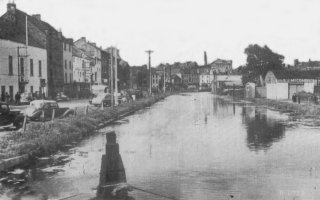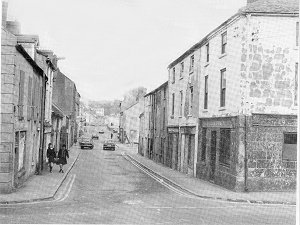Everyone remembers the shop at the corner of childhood– the mullioned window within which all manner of sweets clamoured for our penniless attention: sherbet dips, flying saucers, liquorice pipes, lucky mines and white chocolate mice.
The shopkeeper was often the king in every street and our shopkeeper even had a king’s name. Henry he was called. A kindly man, he gave credit where it was due and sometimes when it was neither due nor appreciated.
Credulous boys who believed the tall tales of their older companions would spend hours outside the shop smoothing silver paper onto battered pennies in a vain attempt to produce gleaming half-crowns. Henry however usually treated such naive forgers with a shrewd smile and a dismissive shrug. “Send for the police? You must be joking,” he’d say. “Send for the psychiatrist more like.”
Like most other corner-shop keepers, Henry kept a stubby pencil behind his ear for the purposes of carrying out calculations on scraps of brown wrapping paper. One memorable morning in the early ’60s, however, he proudly announced the arrival of a wonderful new cut-price mechanical calculator – a mail-order steal at nineteen pounds, nineteen and eleven pence halfpenny!
Reaching under the counter, he produced this miraculous device, and with a conspiratorial wink placed it reverentially on the wooden counter. Naturally, it became the focus of every customer’s attention. But its reign was short-lived, for it proved so unreliable that both Henry and his customers insisted on recalculating each sum it was set to do – thereby defeating the whole purpose of using a calculator in the first place.
An occasional cynical round of applause was given whenever, by some happy accident, the calculator managed to get things right. Within a week the new-fangled contraption was consigned to the evolutionary dustbin from which it had so mysteriously emerged.
Henry had one great if uncelebrated skill with a knife. Like Louis Philippe of
From paper thin slices, he quickly graduated to translucent, transparent, and on some magical occasions invisibly thin slices of bacon and cooked ham. Even the antiquated cheese-slicer was operated with laser-beam accuracy to produce flimsy wafers and shavings of Cheddar that were occasionally tasted but seldom actually seen unless they were held up to the light.
Children familiar with Hans Christian Andersen’s tale of the king’s new clothes took some convincing that there really was food on their plates. But at least it provided some explanation for the phenomenon of the child who, in his mother’s words, “would eat plate and all”.

Well, many years have passed and the corner shop and the shopkeeper are now no more; but somehow I can still hear that shop bell ringing, echoing across the years – summoning up memories of our childhood when Henry was in his shop and all was right with the world.
